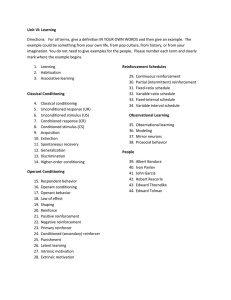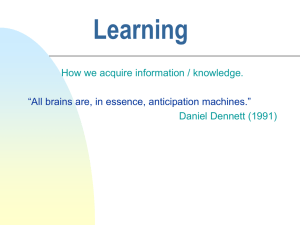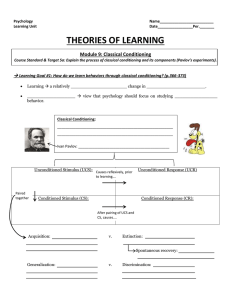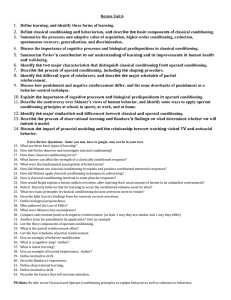6,7,8 Test Review Chapter 6--Learning Classical Conditioning
advertisement
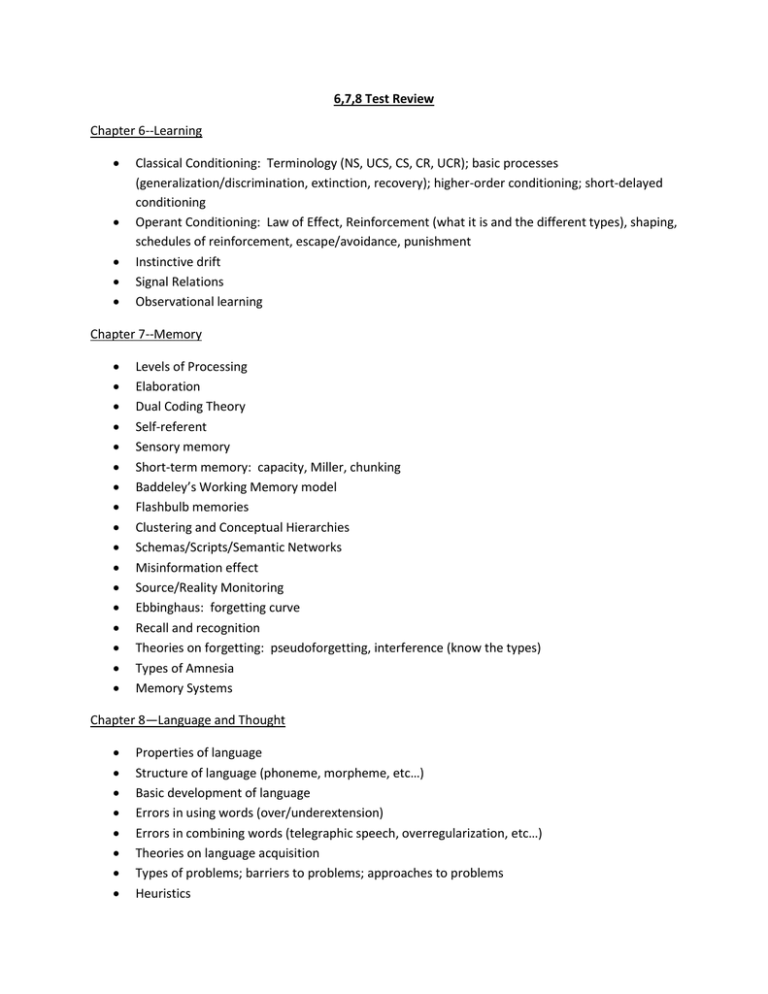
6,7,8 Test Review Chapter 6--Learning Classical Conditioning: Terminology (NS, UCS, CS, CR, UCR); basic processes (generalization/discrimination, extinction, recovery); higher-order conditioning; short-delayed conditioning Operant Conditioning: Law of Effect, Reinforcement (what it is and the different types), shaping, schedules of reinforcement, escape/avoidance, punishment Instinctive drift Signal Relations Observational learning Chapter 7--Memory Levels of Processing Elaboration Dual Coding Theory Self-referent Sensory memory Short-term memory: capacity, Miller, chunking Baddeley’s Working Memory model Flashbulb memories Clustering and Conceptual Hierarchies Schemas/Scripts/Semantic Networks Misinformation effect Source/Reality Monitoring Ebbinghaus: forgetting curve Recall and recognition Theories on forgetting: pseudoforgetting, interference (know the types) Types of Amnesia Memory Systems Chapter 8—Language and Thought Properties of language Structure of language (phoneme, morpheme, etc…) Basic development of language Errors in using words (over/underextension) Errors in combining words (telegraphic speech, overregularization, etc…) Theories on language acquisition Types of problems; barriers to problems; approaches to problems Heuristics Decision making Judging probability Essay options (remember you will only answer one. The question is which options will I put on the test.) Explain how a specific phobia could be acquired through classical conditioning. Be sure to identify the unconditioned stimulus, unconditioned response, conditioned stimulus, and conditioned response in your example. Also, using classical conditioning, indicate how the phobia could be eliminated Provide specific, everyday examples of the following operant conditioning phenomena: positive reinforcement, negative reinforcement, and punishment Compare the Atkinson-Shriffin model of short-term memory with Baddeley’s more complex model. Distinguish between implicit and explicit memory, declarative and procedural memory, semantic and episodic memory, and explain how these are interrelated Compare and contrast the behaviorist and nativist theories on language acquisition. What is the interactionist view and how has it arisen out of dissatisfaction with the other 2 approaches? How does risky decision making differ from making decisions about preferences? How do people generally make each type of decision?



